| Listing 1 - 10 of 16 | << page >> |
Sort by
|
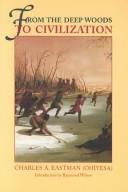
ISBN: 0585310769 9780585310763 0803209363 9780803209367 0803258739 9780803258730 Year: 1977 Publisher: Lincoln : University of Nebraska Press,
Abstract | Keywords | Export | Availability | Bookmark
 Loading...
Loading...Choose an application
- Reference Manager
- EndNote
- RefWorks (Direct export to RefWorks)
Santee Indians --- Indians, North American --- Amerinds, North American --- American Indian, North --- American Indians, North --- Amerind, North American --- Indian, North American --- North American Amerind --- North American Amerinds --- North American Indian --- North American Indians --- Eastern Sioux Indians --- Flandreau Indians --- Santee Sioux Indians --- Sioux Indians, Eastern --- Dakota Indians --- Indians of North America --- Eastman, Charles Alexander, --- Istmėn, Ch. A., --- Ohiyesa, --- Okhidzheza,
Periodical
ISSN: 2052546X Year: 1954 Publisher: Lincoln, Neb. : Leeds, UK : Plains Anthropologist Corp., Maney Publishing
Abstract | Keywords | Export | Availability | Bookmark
 Loading...
Loading...Choose an application
- Reference Manager
- EndNote
- RefWorks (Direct export to RefWorks)
Plains Anthropologist is a quarterly, peer-reviewed academic journal and memoir series that is published by the Plains Anthropological Society. The journal publishes anthropological and historical studies of the physical, cultural, archaeological, and linguistic variation of the peoples and cultures of the North American Great Plains.
Indians of North America --- Archaeology --- Indians, North American --- Antropologische aspecten. --- Indianen. --- Antiquities. --- Indians of North America. --- JEX17 --- Great Plains --- Great Plains. --- Antiquities --- American aborigines --- American Indians --- First Nations (North America) --- Indians of the United States --- Native Americans --- North American Indians --- Archaeological specimens --- Artefacts (Antiquities) --- Artifacts (Antiquities) --- Specimens, Archaeological --- Indigenous peoples --- Amerinds, North American --- American Indian --- American Indian, North --- American Indians, North --- American, Native --- Americans, Native --- Amerind, North American --- Indian, American --- Indian, North American --- Indians, American --- Native American --- North American Amerind --- North American Amerinds --- North American Indian --- Archeology --- Bioarchaeology --- Culture --- Ethnology --- Industries --- Plains, Great --- Material culture --- Canada --- United States, West --- Northwest, Canadian --- West (U.S.) --- West United States --- Archaeology. --- Indians, North American.
Book
ISBN: 9060459199 Year: 1976 Publisher: Baarn Hollandia
Abstract | Keywords | Export | Availability | Bookmark
 Loading...
Loading...Choose an application
- Reference Manager
- EndNote
- RefWorks (Direct export to RefWorks)
Indians, North American. --- Sports. --- Play and Playthings. --- 39:796 --- Play --- Playthings --- Puppets --- Toys --- Plays --- Plaything --- Playthings and Play --- Puppet --- Toy --- Athletics --- Athletic --- Sport --- Exercise Therapy --- Physical Exertion --- Exercise --- Exercise Movement Techniques --- American Indians --- Amerinds, North American --- Native Americans --- American Indian --- American Indian, North --- American Indians, North --- American, Native --- Americans, Native --- Amerind, North American --- Indian, American --- Indian, North American --- Indians, American --- Native American --- North American Amerind --- North American Amerinds --- North American Indian --- North American Indians --- Culturele antropologie van sport en spel. Volkssporten --- 39:796 Culturele antropologie van sport en spel. Volkssporten --- Indians, North American --- Sports --- Play and Playthings
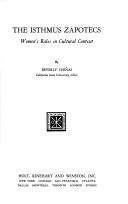
ISBN: 0030803012 Year: 1973 Publisher: New York (N.Y.): Holt, Rinehart and Winston
Abstract | Keywords | Export | Availability | Bookmark
 Loading...
Loading...Choose an application
- Reference Manager
- EndNote
- RefWorks (Direct export to RefWorks)
Anthropology, Cultural --- Ethnology --- Indians, North America --- Role --- Women --- Zapotec Indians --- Indians of Mexico --- Zapotèques --- Social life and customs --- MEurs et coutumes --- Anthropology, Cultural. --- Ethnology. --- Indians, North American. --- Role. --- Women. --- Indian women --- -Zapotec Indians --- Be'ena'a Indians --- Ben 'Zaa Indians --- Binii Gula'sa' Indians --- Didxažon̳ Indians --- Tsapotecatl Indians --- Za Indians --- Zapoteca Indians --- Zapoteco Indians --- Chatino Indians --- Women, Indian --- Woman --- Women's Groups --- Group, Women's --- Groups, Women's --- Women Groups --- Women's Group --- Role Concept --- Concept, Role --- Concepts, Role --- Role Concepts --- Roles --- American Indians --- Amerinds, North American --- Native Americans --- American Indian --- American Indian, North --- American Indians, North --- American, Native --- Americans, Native --- Amerind, North American --- Indian, American --- Indian, North American --- Indians, American --- Native American --- North American Amerind --- North American Amerinds --- North American Indian --- North American Indians --- Primitive Societies --- Primitive Society --- Societies, Primitive --- Society, Primitive --- Cultural Anthropology --- Ethnography --- Ethnographies --- Qualitative Research --- Social life and customs. --- Mexico. --- Girls --- Girl --- Zapotèques --- MĖurs et coutumes --- Indians, North American --- Material Culture --- Culture, Material --- Material Cultures
Book
ISBN: 1786848139 0826129854 9780826129857 9780826129840 0826129846 Year: 2016 Publisher: New York
Abstract | Keywords | Export | Availability | Bookmark
 Loading...
Loading...Choose an application
- Reference Manager
- EndNote
- RefWorks (Direct export to RefWorks)
The text covers the history of American Indians with a focus on the drastic changes that occurred following European contact. The book addresses the roots of American Indian nursing, including coverage of indigenous knowledge and traditional approaches to health and healing.
Transcultural nursing --- Indians of North America --- Indians, North American --- Transcultural Nursing --- Cultural Competency --- Education, Nursing --- Minority Health --- Cross-cultural nursing --- Nursing --- Transcultural medical care --- Minority Health and Health Disparities Research and Education Act of 2000 --- Health, Minority --- Minority Groups --- Nursing Education --- Educations, Nursing --- Nursing Educations --- Nurses --- Nursing Care --- Students, Nursing --- Cultural Competence --- Competence, Cultural --- Competency, Cultural --- Cultural Competencies --- Culturally Competent Care --- Nursing, Transcultural --- Amerinds, North American --- American Indian, North --- American Indians, North --- Amerind, North American --- Indian, North American --- North American Amerind --- North American Amerinds --- North American Indian --- North American Indians --- Health and hygiene. --- Medicine. --- education --- Indians of North America. --- American aborigines --- American Indians --- First Nations (North America) --- Indians of the United States --- Indigenous peoples --- Native Americans --- Culture --- Ethnology
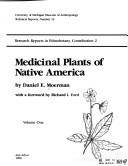
ISBN: 0915703092 Year: 1986 Volume: 19 Publisher: Ann Arbor : University of Michigan, Museum of Anthropology, Publications Department,
Abstract | Keywords | Export | Availability | Bookmark
 Loading...
Loading...Choose an application
- Reference Manager
- EndNote
- RefWorks (Direct export to RefWorks)
Indians of North America --- Medicinal plants --- Indiens d'Amérique --- Plantes médicinales --- Ethnobotany --- Tables. --- Medicine --- Ethnobotanique --- Tables --- Médecine --- Special issues --- Indians, North American. --- Plants, Medicinal. --- -Indians of North America --- -American aborigines --- American Indians --- First Nations (North America) --- Indians of the United States --- Indigenous peoples --- Native Americans --- North American Indians --- Drug plants --- Plants, Useful --- Botanical drug industry --- Botany, Medical --- Materia medica, Vegetable --- Psychotropic plants --- Healing Plants --- Medicinal Plants --- Pharmaceutical Plants --- Herbs, Medicinal --- Medicinal Herbs --- Healing Plant --- Herb, Medicinal --- Medicinal Herb --- Medicinal Plant --- Pharmaceutical Plant --- Plant, Healing --- Plant, Medicinal --- Plant, Pharmaceutical --- Plants, Healing --- Plants, Pharmaceutical --- Pharmaceutical Preparations --- Phytotherapy --- Medicine, Traditional --- Pharmacognosy --- Ethnopharmacology --- Herbal Medicine --- Amerinds, North American --- American Indian --- American Indian, North --- American Indians, North --- American, Native --- Americans, Native --- Amerind, North American --- Indian, American --- Indian, North American --- Indians, American --- Native American --- North American Amerind --- North American Amerinds --- North American Indian --- -Tables --- Culture --- Ethnology --- United States. --- Indiens d'Amérique --- Plantes médicinales --- Médecine --- Indians, North American --- Plants, Medicinal --- American aborigines --- Ethnobotany&delete& --- Medicine&delete& --- Plantes medicinales --- Indiens --- Amerique du nord --- Medecine
Book
ISBN: 3319715380 3319715372 Year: 2018 Publisher: Cham : Springer,
Abstract | Keywords | Export | Availability | Bookmark
 Loading...
Loading...Choose an application
- Reference Manager
- EndNote
- RefWorks (Direct export to RefWorks)
This ambitious sourcebook surveys both the traditional basis for and the present state of indigenous women’s reproductive health in Mexico and Central America. Noted practitioners, specialists, and researchers take an interdisciplinary approach to analyze the multiple barriers for access and care to indigenous women that had been complicated by longstanding gender inequities, poverty, stigmatization, lack of education, war, obstetrical violence, and differences in language and customs, all of which contribute to unnecessary maternal morbidity and mortality. Emphasis is placed on indigenous cultures and folkways—from traditional midwives and birth attendants to indigenous botanical medication and traditional healing and spiritual practices—and how they may effectively coexist with modern biomedical care. Throughout these chapters, the main theme is clear: the rights of indigenous women to culturally respective reproductive health care and a successful pregnancy leading to the birth of healthy children. A sampling of the topics: Motherhood and modernization in a Yucatec village Maternal morbidity and mortality in Honduran Miskito communities Solitary birth and maternal mortality among the Rarámuri of Northern Mexico Maternal morbidity and mortality in the rural Trifino region of Guatemala The traditional Ngäbe-Buglé midwives of Panama Characterizations of maternal death among Mayan women in Yucatan, Mexico Unintended pregnancy, unsafe abortion, and unmet need in Guatemala Maternal Death and Pregnancy-Related Morbidity Among Indigenous Women of Mexico and Central America is designed for anthropologists and other social scientists, physicians, nurses and midwives, public health specialists, epidemiologists, global health workers, international aid organizations and NGOs, governmental agencies, administrators, policy-makers, and others involved in the planning and implementation of maternal and reproductive health care of indigenous women in Mexico and Central America, and possibly other geographical areas. .
Mothers --- Mortality --- Medicine. --- Maternal and child health services. --- Reproductive medicine. --- Epidemiology. --- Medical anthropology. --- Medicine & Public Health. --- Maternal and Child Health. --- Reproductive Medicine. --- Medical Anthropology. --- Obstetrics/Perinatology/Midwifery. --- Medical care --- Medicine --- Anthropology --- Diseases --- Public health --- Human reproduction --- Human reproductive health --- Human reproductive medicine --- Reproductive medicine --- Health --- Clinical sciences --- Medical profession --- Human biology --- Life sciences --- Medical sciences --- Pathology --- Physicians --- Anthropological aspects --- Health aspects --- Moms --- Parents --- Women --- Housewives --- Motherhood --- Pregnant women --- Maternal and infant welfare. --- Obstetrics. --- Maternal-fetal medicine --- Infant welfare --- Infants --- Maternity welfare --- Child welfare --- Maternal health services --- Charities, protection, etc. --- Charities --- Maternal Death --- Maternal Mortality. --- Pregnancy Complications --- Reproductive Health Services. --- Indians, North American. --- Indians, Central American. --- Anthropology, Medical. --- prevention & control. --- epidemiology. --- Mexico. --- Central America. --- Amerinds, Central American --- American Amerind, Central --- American Amerinds, Central --- American Indian, Central --- American Indians, Central --- Amerind, Central American --- Central American Amerind --- Central American Amerinds --- Central American Indian --- Central American Indians --- Indian, Central American --- American Indians --- Amerinds, North American --- Native Americans --- American Indian --- American Indian, North --- American Indians, North --- American, Native --- Americans, Native --- Amerind, North American --- Indian, American --- Indian, North American --- Indians, American --- Native American --- North American Amerind --- North American Amerinds --- North American Indian --- North American Indians --- Health Service, Reproductive --- Health Services, Reproductive --- Reproductive Health Service --- Service, Reproductive Health --- Services, Reproductive Health --- Reproductive Health --- Mortality, Maternal --- Maternal Mortalities --- Mortalities, Maternal --- Pregnancy --- Complications --- Gestation --- Conception --- Physiology --- Reproduction
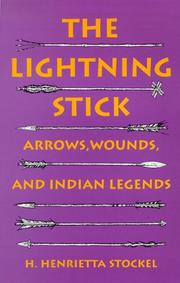
ISBN: 087417399X 9780874173994 0874172667 Year: 1995 Publisher: Reno : University of Nevada Press,
Abstract | Keywords | Export | Availability | Bookmark
 Loading...
Loading...Choose an application
- Reference Manager
- EndNote
- RefWorks (Direct export to RefWorks)
Surgery, Military --- Bow and arrow --- Stab wounds. --- Indian weapons --- Wounds, Penetrating --- Wounds, Stab --- Indians, North American --- Military Medicine --- Mythology --- Stab wounds --- Literature --- Wounds and Injuries --- American Native Continental Ancestry Group --- Medicine --- Diseases --- Health Occupations --- Humanities --- Continental Population Groups --- Disciplines and Occupations --- Population Groups --- Persons --- Named Groups --- Stabbing wounds --- Penetrating wounds --- Arrows --- Bows (Archery) --- Weapons --- Archery --- Medicine, Military --- Military surgery --- Stab Wound --- Stab Wounds --- Wound, Stab --- Punctures --- Amerinds, North American --- American Indian, North --- American Indians, North --- Amerind, North American --- Indian, North American --- North American Amerind --- North American Amerinds --- North American Indian --- North American Indians --- Penetrating Wound --- Penetrating Wounds --- Wound, Penetrating --- Person --- Indigenous Population --- Native-Born --- Natives --- Tribes --- Group, Population --- Groups, Population --- Indigenous Populations --- Native Born --- Population Group --- Population, Indigenous --- Populations, Indigenous --- Race --- Racial Stocks --- Continental Population Group --- Group, Continental Population --- Groups, Continental Population --- Population Group, Continental --- Population Groups, Continental --- Races --- Racial Stock --- Stock, Racial --- Stocks, Racial --- Race Factors --- Health Professions --- Health Occupation --- Health Profession --- Profession, Health --- Professions, Health --- Occupations --- Medical Specialities --- Medical Specialties --- Medical Specialty --- Specialities, Medical --- Specialties, Medical --- Specialty, Medical --- Medical Speciality --- Speciality, Medical --- Health Workforce --- Injuries and Wounds --- Injuries, Wounds --- Research-Related Injuries --- Wounds --- Wounds and Injury --- Wounds, Injury --- Injuries --- Trauma --- Injuries, Research-Related --- Injury --- Injury and Wounds --- Injury, Research-Related --- Research Related Injuries --- Research-Related Injury --- Traumas --- Wound --- First Aid --- Traumatology --- Literatures --- Indians --- Weapons, Indian --- Indians of North America --- History --- History. --- Arms and armor --- Wounds, Penetrating. --- Wounds, Stab. --- Indians, North American. --- Mythology. --- history. --- United States.
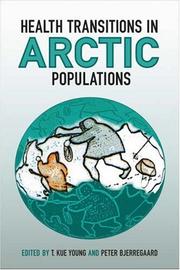
ISBN: 144268819X 9781442688193 9780802091093 9780802094018 1442691190 Year: 2008 Publisher: Toronto
Abstract | Keywords | Export | Availability | Bookmark
 Loading...
Loading...Choose an application
- Reference Manager
- EndNote
- RefWorks (Direct export to RefWorks)
The Arctic regions are inhabited by diverse populations, both indigenous and non-indigenous. Health Transitions in Arctic Populations describes and explains changing health patterns in these areas, how particular patterns came about, and what can be done to improve the health of Arctic peoples. This study correlates changes in health status with major environmental, social, economic, and political changes in the Arctic. T. Kue Young and Peter Bjerregaard seek commonalities in the experiences of different peoples while recognizing their considerable diversity. They focus on five Arctic regions - Greenland, Northern Canada, Alaska, Arctic Russia, and Northern Fennoscandia, offering a general overview of the geography, history, economy, population characteristics, health status, and health services of each. The discussion moves on to specific indigenous populations (Inuit, Dene, and Sami), major health determinants and outcomes, and, finally, an integrative examination of what can be done to improve the health of circumpolar peoples. Health Transitions in Arctic Populations offers both an examination of key health issues in the north and a vision for the future of Arctic inhabitants.
Health transition --- Indigenous peoples --- Arctic peoples --- Public health --- Health Transition --- Health Status --- Indians, North American --- Inuits --- Public Health --- Community health --- Health services --- Hygiene, Public --- Hygiene, Social --- Public health services --- Public hygiene --- Social hygiene --- Health --- Human services --- Biosecurity --- Health literacy --- Medicine, Preventive --- National health services --- Sanitation --- Arctic races --- Circumpolar peoples --- Ethnology --- Hyperboreans --- Aboriginal peoples --- Aborigines --- Adivasis --- Indigenous populations --- Native peoples --- Native races --- Epidemiological transition --- Transition, Epidemiological --- Transition, Health --- Epidemiology --- Community Health --- Environment, Preventive Medicine & Public Health --- Environment, Preventive Medicine and Public Health --- Health, Community --- Health, Public --- Preventive Medicine --- Education, Public Health Professional --- Aleuts --- Eskimos --- Inupiats --- Kalaallits --- Aleut --- Eskimo --- Inuit --- Inupiat --- Kalaallit --- Alaskan Natives --- Amerinds, North American --- American Indian, North --- American Indians, North --- Amerind, North American --- Indian, North American --- North American Amerind --- North American Amerinds --- North American Indian --- North American Indians --- Level of Health --- Health Level --- Health Levels --- Status, Health --- Health Transitions --- Transitions, Health --- Health and hygiene --- Health and hygiene. --- Arctic regions. --- Arctic --- Arctic Ocean Region --- Arctic, The --- Far North --- The Arctic --- Polar regions --- Inuk --- General Health --- General Health Level --- General Health Status --- Overall Health --- Overall Health Status --- General Health Levels --- Health Level, General --- Health Status, General --- Health Status, Overall --- Health, General --- Health, Overall --- Level, General Health --- Levels, General Health --- Status, General Health --- Status, Overall Health --- Alaska Natives
Book
ISBN: 088755573X 0887555713 9780887555718 9780887555732 0887558356 9780887558351 Year: 2018 Publisher: Winnipeg, Manitoba : University of Manitoba Press,
Abstract | Keywords | Export | Availability | Bookmark
 Loading...
Loading...Choose an application
- Reference Manager
- EndNote
- RefWorks (Direct export to RefWorks)
"Structures of Indifference examines an Indigenous life and death in a Canadian city, and what it reveals about the ongoing history of colonialism. At the heart of this story is a thirty-four-hour period in September 2008. During that day and half, Brian Sinclair, a middle-aged, non-Status Anishinaabeg resident of Manitoba's capital city, arrived in the emergency room of the Health Sciences Centre, Winnipeg's major downtown hospital, was left untreated and unattended to, and ultimately died from an easily treatable infection. His death reflects a particular structure of indifference born of and maintained by colonialism. McCallum and Perry present the ways in which Sinclair, once erased and ignored, came to represent diffuse, yet singular and largely dehumanized ideas about Indigenous people, modernity, and decline in cities. This story tells us about ordinary indigeneity in the City of Winnipeg through Sinclair's experience and restores the complex humanity denied him in his interactions with Canadian health and legal systems, both before and after his death. Structures of Indifference completes the story left untold by the inquiry into Sinclair's death, the 2014 report of which omitted any consideration of underlying factors, including racism and systemic discrimination."--Provided by publisher.
Ojibwa Indians --- Indians, North American. --- Healthcare Disparities. --- Attitude of Health Personnel. --- Colonialism. --- Racism. --- Algic Indians --- Anishinabe Indians --- Bawichtigoutek Indians --- Bungee Indians --- Bungi Indians --- Chipouais Indians --- Chippewa Indians --- Lac Courte Oreilles Indians --- Ochepwa Indians --- Odjibway Indians --- Ojebwa Indians --- Ojibua Indians --- Ojibwauk Indians --- Ojibway Indians --- Ojibwe Indians --- Otchilpwe Indians --- Otchipwe Indians --- Salteaux Indians --- Saulteaux Indians --- Algonquian Indians --- Indians of North America --- Covert Racism --- Racial Bias --- Racial Discrimination --- Racial Prejudice --- Bias, Racial --- Covert Racisms --- Discrimination, Racial --- Discriminations, Racial --- Prejudice, Racial --- Prejudices, Racial --- Racial Discriminations --- Racial Prejudices --- Racism, Covert --- Racisms, Covert --- Apartheid --- Staff Attitude --- Attitude, Staff --- Attitudes, Staff --- Health Personnel Attitude --- Health Personnel Attitudes --- Staff Attitudes --- Health Care Disparities --- Health Care Inequalities --- Healthcare Disparity --- Healthcare Inequalities --- Disparities, Healthcare --- Disparities, Health Care --- Disparity, Health Care --- Disparity, Healthcare --- Health Care Disparity --- Health Care Inequality --- Healthcare Inequality --- Inequalities, Health Care --- Inequalities, Healthcare --- Inequality, Health Care --- Inequality, Healthcare --- Amerinds, North American --- American Indian, North --- American Indians, North --- Amerind, North American --- Indian, North American --- North American Amerind --- North American Amerinds --- North American Indian --- North American Indians --- Sinclair, Brian, --- Health Sciences Centre (Winnipeg, Man.) --- Manitoba. --- Everyday Racism --- Racism, Everyday --- Antiracism --- Centre des sciences de la santé
| Listing 1 - 10 of 16 | << page >> |
Sort by
|

 Search
Search Feedback
Feedback About UniCat
About UniCat  Help
Help News
News